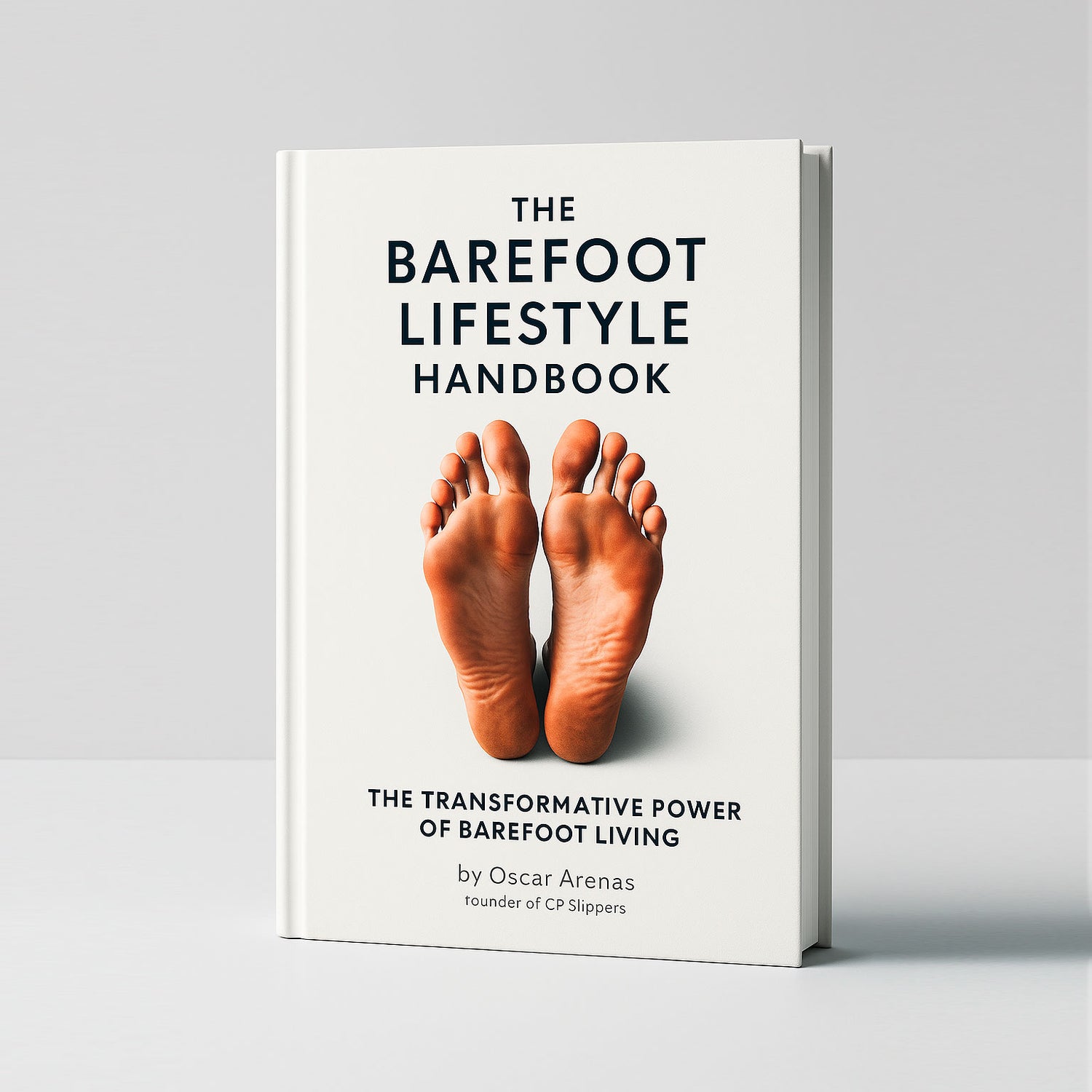
Chapter 5: Barefoot and Wellness
How ditching shoes can contribute to overall health and wellbeing.
Reclaiming health, naturally and holistically
Often the most significant difference comes from the smallest adjustments. Though it might not sound revolutionary, taking off your shoes can cause a change in your attitude toward your body, your thoughts, and your surroundings. The barefoot way of life is more than just what's underfoot; it's a quiet but effective return to wellness via presence, movement, and connection.
The physical upside of going barefoot
Our feet are sophisticated, highly evolved mobility devices. Muscle, ligament, tendon, and nerve endings are packed; they are meant to move, feel, and change. Modern shoes, however, often limit them, causing persistent pain, poor alignment, and weakness.
Walking barefoot, especially on natural terrain, invites your feet to work as they were intended to. The outcome is?
- Stronger foot muscles that support better posture and balance.
- Improved mechanics in how you stand, walk, and move.
- Relief from common conditions like plantar fasciitis, bunions, and lower back pain.
Then there is grounding, the physical connection your body makes to the Earth. Direct skin-to-ground contact, according to recent studies, helps the body neutralize free radicals, therefore lowering stress levels, improving sleep, and reducing inflammation.
Starting from the ground up, wellbeing is.
Mental and emotional benefits of going barefoot
Feeling the ground beneath your feet brings a peace. Though faint, it's real. Particularly in peaceful, natural surroundings, walking barefoot asks you to slow down. You start to observe more. Your breathing gets deeper. Your mind starts to silence itself.
This serves emotional control rather than only leisure. Grass, sand, earth, and stone—the sensory input from many textures stimulates the nervous system and helps you to focus on the present moment. At the core of mindfulness, this grounded awareness has been demonstrated to help with general mental clarity, lower anxiety, and improve mood.
Barefoot walking provides a moment of reconnection with yourself as much as with nature in a society of continual digital distraction.
A deepened connection with the natural world
Many times, wellness is sold as pills, devices, and regimens. Real well-being, however, stems from something more fundamental—our relationship with our surroundings. Walking barefoot means entering a relationship with the ground. You can sense its textures, temperature, and rhythms.
Along with inner serenity, this regular reconnection helps one develop a more environmentally sensitive attitude. Having personally encountered natural settings with closeness, you start to regard them with more respect. Between environmental awareness and health, this feedback loop forms the basis of sustainable living.
Real challenges, Real solutions
Of course, the road toward barefoot wellness is not always straightforward. At first, one feels uncomfortable. You can be prone to social judgment, to uneven ground, or just to strange feelings. That is all, though, part of the change.
Some tips for navigating the journey:
- Start where it feels safe, like your home, a backyard, or a clean patch of grass.
- Go slow. Let your body adapt gradually to new surfaces.
- Use minimalist footwear when full barefoot walking isn’t possible.
- Tune in. Notice how your body and mind respond, and adjust as needed.
No one "perfect" barefoot path exists. It's about figuring out what fits you and growing at your own speed.
How to bring barefoot practices into your life
The advantages don't depend on you spending all day barefoot. Even a few deliberate minutes will help:
- Take your morning coffee outside barefoot.
- Go for a short walk on natural terrain.
- Practice yoga or stretching without shoes.
- Do barefoot strength and balance exercises.
Consider it as a ritual, a little act of grounding that helps you to reawaken your body and surroundings.
Final thought: Wellness as a way of living
Fundamentally, barefoot living addresses more than just foot health. This is a presence, simplicity, and connection lifestyle. It reminds us that actual wellness sometimes calls for less rather than always more. Few cushions. Less noise. Less distance from the environment naturally occurring.
Walking barefoot helps us to truly, honestly, and freely remember what it feels like to be alive in our bodies.





